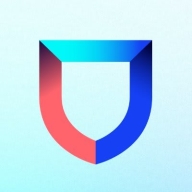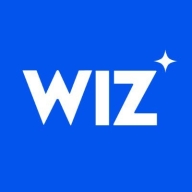


Lacework FortiCNAPP and Wiz compete in the cloud security solutions category. Wiz has a slight advantage due to its comprehensive risk evaluation and visibility capabilities.
Features: Lacework FortiCNAPP offers ease of use, effective anomaly detection with machine learning, and comprehensive compliance reports, saving time and improving accuracy. Wiz excels in risk evaluation, providing context for issues to prioritize critical misconfigurations and vulnerabilities. Its Security Graph enhances visibility and automation, delivering a thorough risk scenario analysis.
Room for Improvement: Lacework FortiCNAPP could enhance visibility and integrations, particularly in compliance and IAM security controls. It also seeks to improve remediation features. Wiz needs to improve reporting, Kubernetes security functionality, and risk assessment mechanisms. Connector status notifications and more frequent scanning are also areas for improvement.
Ease of Deployment and Customer Service: Both Lacework FortiCNAPP and Wiz are primarily used in public cloud environments, with Lacework also supporting private clouds and Wiz offering hybrid cloud compatibility. Wiz integrates seamlessly and provides proactive customer service through multiple channels like Slack. Lacework FortiCNAPP offers responsive support with consistent feedback implementation, though they differ in escalation and resolution speeds.
Pricing and ROI: Lacework FortiCNAPP has a flexible pricing model suitable for early adopters. Though moderately priced, it is considered somewhat expensive but offers a notable ROI by reducing manual efforts. Wiz is at a higher price point and is often described as costly compared to competitors like Lacework. However, its robust capabilities justify the price, with room for improvement in pricing transparency. Both solutions have potential for cost savings by reducing the need for extensive security staffing.
The detailed information PingSafe gives about how to fix vulnerabilities reduces the time spent on remediation by about 70 to 80 percent.
After implementing SentinelOne, it takes about five to seven minutes.
Cloud Native Security does offer ROI.
We have seen ROI from Wiz and we continued to see value in Wiz.
We estimate a cost reduction of around 35% to 50%, or even more, due to consolidating our security management into one platform.
When we send an email, they respond quickly and proactively provide solutions.
They took direct responsibility for the system and could solve queries quickly.
Having a reliable team ready and willing to assist with any issues is essential.
Technical support from Fortinet is good; I get feedback and responses quickly.
We have a dedicated channel with Wiz and are always in communication with them.
The solution's technical support was excellent.
Century Data has an engineering team who support the initial calls with a local Knowledge base.
I would rate it a 10 out of 10 for scalability.
Scalability is no longer a concern because Cloud Native Security is a fully cloud-based resource.
I would rate the scalability of PingSafe 10 out of 10.
We have deployed Wiz in three organizations on AWS, each with approximately 70 to 80 accounts, totaling more than 120 accounts.
Scalability-wise, I rate the solution a ten out of ten.
Our environment quadrupled in size. We didn’t have to make any adjustments or configuration changes; it just accommodated the growth.
It's a reliable solution that the organization is increasingly adopting for its robust features and security.
We contacted Cloud Native Security, and they addressed it in a day.
The only downtime we had was when switching from V1 to V2 but it was smooth.
Stability-wise, I rate the solution an eight to nine out of ten.
The solution is very stable.
We haven't encountered any outages or issues with reports not running, finishing, or data being incomplete or inaccurate.
If they can merge Kubernetes Security with other modules related to Kubernetes, that would help us to get more modules in the current subscription.
As organizations move to the cloud, a cloud posture management tool that offers complete cloud visibility becomes crucial for maintaining compliance.
I would also like to see Cloud Native Security offer APIs that allow us to directly build dashboards within the platform.
The vulnerability part is not systematically organized; it is all clumsy in the web UI, and it is not user-friendly.
We would like to see preventive controls that can be applied through Wiz to protect against vulnerabilities that we're not going to be able to remediate immediately.
One significant area for improvement would be increasing automation. While they excel at identifying issues, we need assistance in minimizing the human hours required for tasks.
We need an agent that can be installed, or that can overview all the containers and Kubernetes so that it can detect malicious activities that are happening in them.
I believe the enterprise version costs around $55 per user per year.
There are some tools that are double the cost of Cloud Native Security.
I recall Cloud Native Security charging a slightly higher premium previously.
We are paying 250k per year.
In some cases, it has a very aggressive price, so very cheap.
I don’t think there’s anyone else out there offering the same level, scale, or efficiency.
This helps visualize potential attack paths and even suggests attack paths a malicious actor might take.
The infrastructure-as-code feature is helpful for discovering open ports in some of the modules.
This tool has been helpful for us. It allows us to search for vulnerabilities and provides evidence directly on the screen.
The machine learning capability in Lacework FortiCNAPP is used for threat detection.
The feature leads to minimal false positives and a low volume of alerts, which is highly valuable for our operations.
It's highly customizable, allowing us to manage many custom features effectively.
Regarding compliance and governance, Wiz streamlines our vulnerability management to meet specific needs effectively.
| Product | Market Share (%) |
|---|---|
| Wiz | 23.4% |
| SentinelOne Singularity Cloud Security | 4.6% |
| Lacework FortiCNAPP | 2.7% |
| Other | 69.3% |



| Company Size | Count |
|---|---|
| Small Business | 46 |
| Midsize Enterprise | 20 |
| Large Enterprise | 53 |
| Company Size | Count |
|---|---|
| Small Business | 4 |
| Midsize Enterprise | 4 |
| Large Enterprise | 4 |
| Company Size | Count |
|---|---|
| Small Business | 9 |
| Midsize Enterprise | 6 |
| Large Enterprise | 11 |
SentinelOne Singularity Cloud Security offers a streamlined approach to cloud security with intuitive operation and strong integration capabilities for heightened threat detection and remediation efficiency.
Singularity Cloud Security stands out for its real-time detection and response, effectively minimizing detection and remediation timelines. Its automated remediation integrates smoothly with third-party tools enhancing operational efficiency. The comprehensive console ensures visibility and support for forensic investigations. Seamless platform integration and robust support for innovation are notable advantages. Areas for development include improved search functionality, affordability, better firewall capabilities for remote users, stable agents, comprehensive reporting, and efficient third-party integrations. Clarity in the interface, responsive support, and real-time alerting need enhancement, with a call for more automation and customization. Better scalability and cost-effective integration without compromising capabilities are desired.
What are SentinelOne Singularity Cloud Security's standout features?SentinelOne Singularity Cloud Security is deployed in industries needing robust cloud security posture management, endpoint protection, and threat hunting. Utilized frequently across AWS and Azure, it assists in monitoring, threat detection, and maintaining compliance in diverse environments while providing real-time alerts and recommendations for proactive threat management.
Lacework FortiCNAPP provides robust cloud security, combining vulnerability management and multi-cloud insight with user-friendly controls, machine learning detection, and compliance support.
Lacework FortiCNAPP specializes in cloud security by merging machine learning anomaly detection with agent-based vulnerability management to offer detailed alerts and compliance reports. Its comprehensive approach allows continuous monitoring across AWS and Kubernetes, providing insights from an attacker's perspective. The platform offers automation and seamless Slack integration, facilitating collaborative and efficient cloud security management. Users value its ability to handle multi-cloud environments and scan IAC scripts, configurations, and compute nodes across AWS and GCP.
What are the key features?Organizations across sectors leverage Lacework FortiCNAPP for cloud security, focusing on compliance, security posture, and vulnerability management. It is widely used for monitoring AWS and Kubernetes environments, scanning IAC scripts, configurations, and securing compute nodes. It supports multi-cloud security posture management and log ingestion, enabling companies to maintain strong cloud infrastructures without dedicated security layers.
Wiz is a highly efficient solution for data security posture management (DSPM), with a 100% API-based approach that provides quick connectivity and comprehensive scans of platform configurations and workloads. The solution allows companies to automatically correlate sensitive data with relevant cloud context, such as public exposure, user identities, entitlements, and vulnerabilities.This integration enables them to understand data accessibility, configuration, usage, and movement within their internal environments.
Wiz's Security Graph delivers automated alerts whenever risks emerge, allowing teams to prioritize and address the most critical issues before they escalate into breaches. Furthermore, Wiz ensures rapid and agentless visibility into critical data across various repositories, enabling organizations to easily determine the location of their data assets.
Wiz provides various features in the following categories:
Agentless Scanning: The solution can scan every layer of a cloud environment without requiring agents, managing the entire process and providing comprehensive visibility.
Workflow Integration: Users can create customized workflows within Wiz to identify and assign actions based on urgency, integrating them with ticketing systems for quick and efficient remediation.
Vulnerability Management: Wiz's vulnerability management modules provide detailed analytics and visibility across cloud systems, streamlining the manual process of vulnerability discovery. The automated attack path analysis helps identify risks and trace potential points of exposure, allowing users to understand and mitigate them effectively and proactively.
CSPM (Cloud Security Posture Management): Wiz's CSPM module offers instant visibility into high-level risks to an enterprise’s cloud environment, covering all accounts without the need for agents.
Out-of-the-Box Reporting and Custom Queries: The service supports comprehensive reporting with asset context, allowing users to perform complex custom queries on the solution’s user-friendly interface.
Automation Roles and Dashboards: The solution facilitates automation by providing essential roles and dedicated dashboards that enable teams to understand security information quickly, even those with limited expertise.
Contextual Risk Evaluation: The service contextualizes the various components contributing to an issue, providing a risk evaluation framework that helps prioritize remediation efforts.
Security Graph and Visibility: Wiz's security graph offers visibility across the entire organization, even with multiple accounts, enabling users to understand their environment and assets effectively.
Wiz offers the following benefits:
Comprehensive agentless scanning
Effective identification and mitigation of vulnerabilities
Streamlined vulnerability management
Robust reporting capabilities and customizable queries
Enhanced automation and role-based access control
Prioritized risk evaluation for efficient remediation
Security posture across multiple accounts
Kamran Siddique, VP Information Security at boxed.com, remarks his company has seen a ROI while using Wiz, as it simplifies the process by integrating multiple useful tools into one solution.
According to a Senior Security Architect at Deliveroo, Wiz has given their company a fresh approach to vulnerability management, as Wiz's native integrations are extremely useful and paramount to the operational success of their platform.
We monitor all Cloud-Native Application Protection Platforms (CNAPP) reviews to prevent fraudulent reviews and keep review quality high. We do not post reviews by company employees or direct competitors. We validate each review for authenticity via cross-reference with LinkedIn, and personal follow-up with the reviewer when necessary.